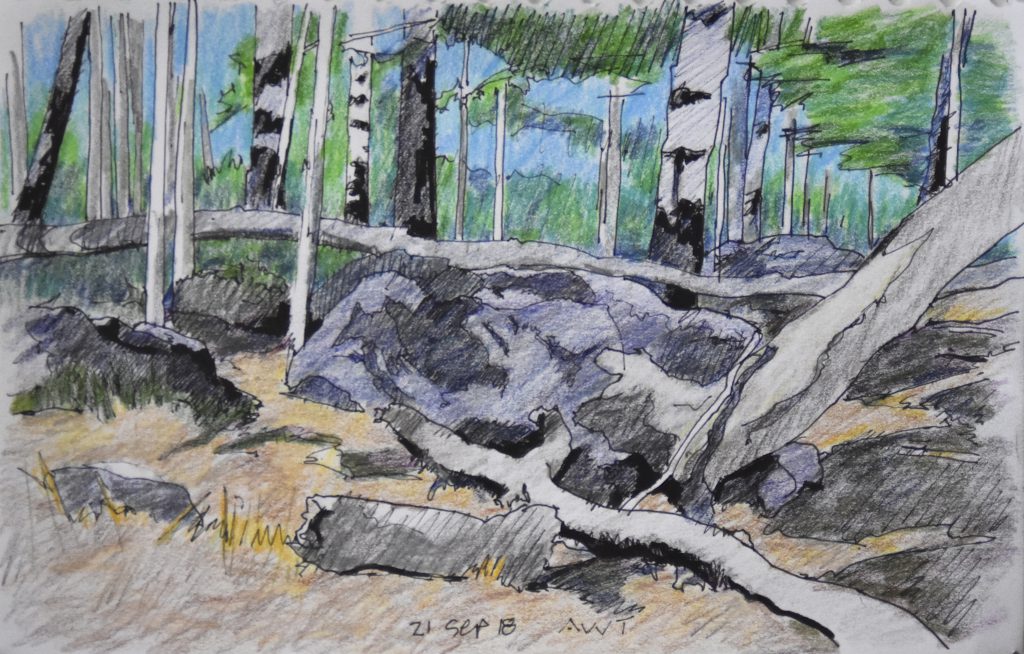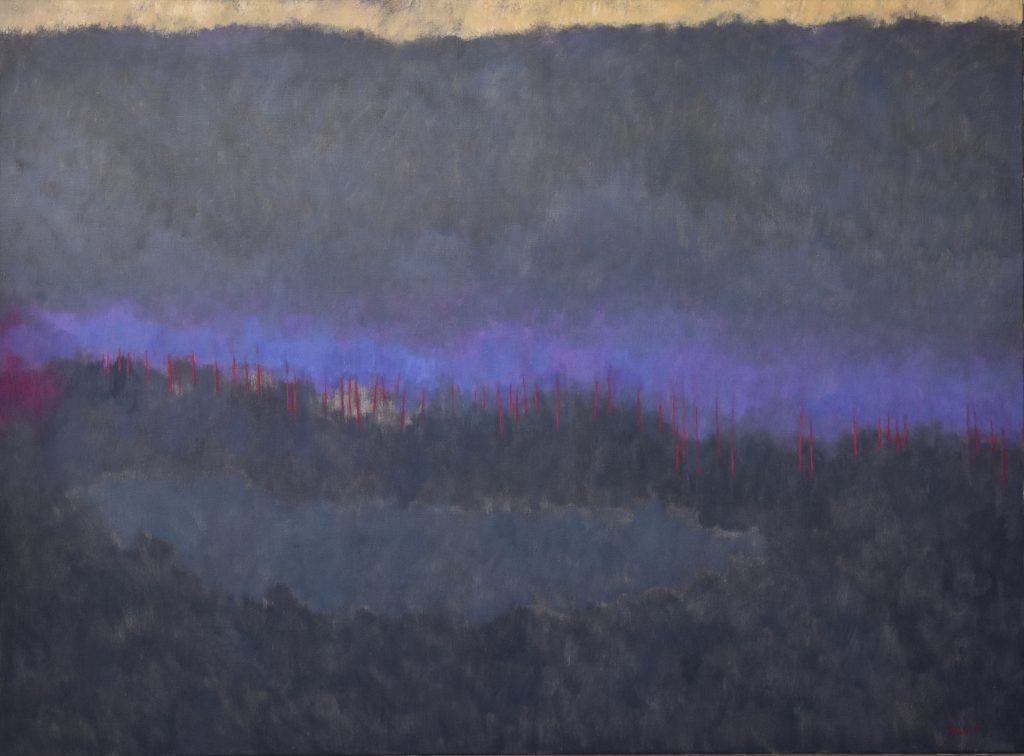Colorado artist, Andy Taylor, is known for large oil paintings in his colorful, gestural style. The artist sits down to explain how oil pastel, ink, and colored pencil sketches help him work through the process and move him into new territory. Andy Taylor pastels carry what he describes as “immediate intensity.”
Read the interview below


I do drawings (pen, colored pencil, oil pastel and a very few watercolors) for three reasons: The first reason is that drawing is quick, inexpensive and convenient. It is good exercise for hand/eye coordination and good exercise for mind/eye coordination.
The second reason is to gather information in ways that might be useful for paintings — looking at the composition (how all the parts fit), the colors (is there anything special about them), and the values (dark and light). How does it all work on the page/canvas? I use the pen and colored pencil drawings for this purpose. The size is convenient for walking and travel; the media are indelible so when I drop the sketchbook in the river or when my water bottle leaks nothing is lost (both of which have happened).
The third reason for doing drawings is to experiment. I can try all sorts of things on paper; if they fail, they get trashed — just a little time lost. A few times, maybe more than a few, I have felt that my art is stagnant or that I want to attempt a new direction or that I can do better than I have. Unlike “writer’s block” when words might be elusive, I am not at a loss for the images that I want to make — just the opposite — but I want to push what I think is good in what I have done. I have always turned to oil pastels as a means to try to move forward. I’m not sure why, except I like their immediate intensity, the ease, and the lack of commitment — the trash bin is always near.

Toned paper, or a toned ground on a canvas enables one to work in both directions in values, leaving the tone as a rough middle point.
The other thing toned paper provides is unity. No matter how hard one tries to cover it up, the tone is always present. I like to think of it as an advantage, rather than something to obscure.

Once upon time, when I was about 10 or 12, either my parents or one of my aunts gave me a set of soft pastels. I kept them, treasured them, and rarely used them. I could never quite figure out how to use them. Sometime after that I acquired, either by gift or child coercion, a set of hard pastels (pastels in pencil form with the hardness of a 2B or B charcoal pencil). I used them extensively early in my career, although timidly, and continue to use them occasionally today.
In my 20s I met with Antoinette Kraushaar (Kraushaar Gallery) to show her some of my work. She suggested that I try oil pastels which, of course, I immediately did. My first attempts were, at best, awkward, but stronger than anything I had done with soft pastels.
As with any medium, there is a great range in quality. Several years later and after trying several brands, I found a type that suited how I like to work.
I use oil pastels in a way that is similar to how I paint — thin layers of two or three colors. Things can get ugly, greasy, and muddy fast if I use them aggressively — very similar to oil paints.
